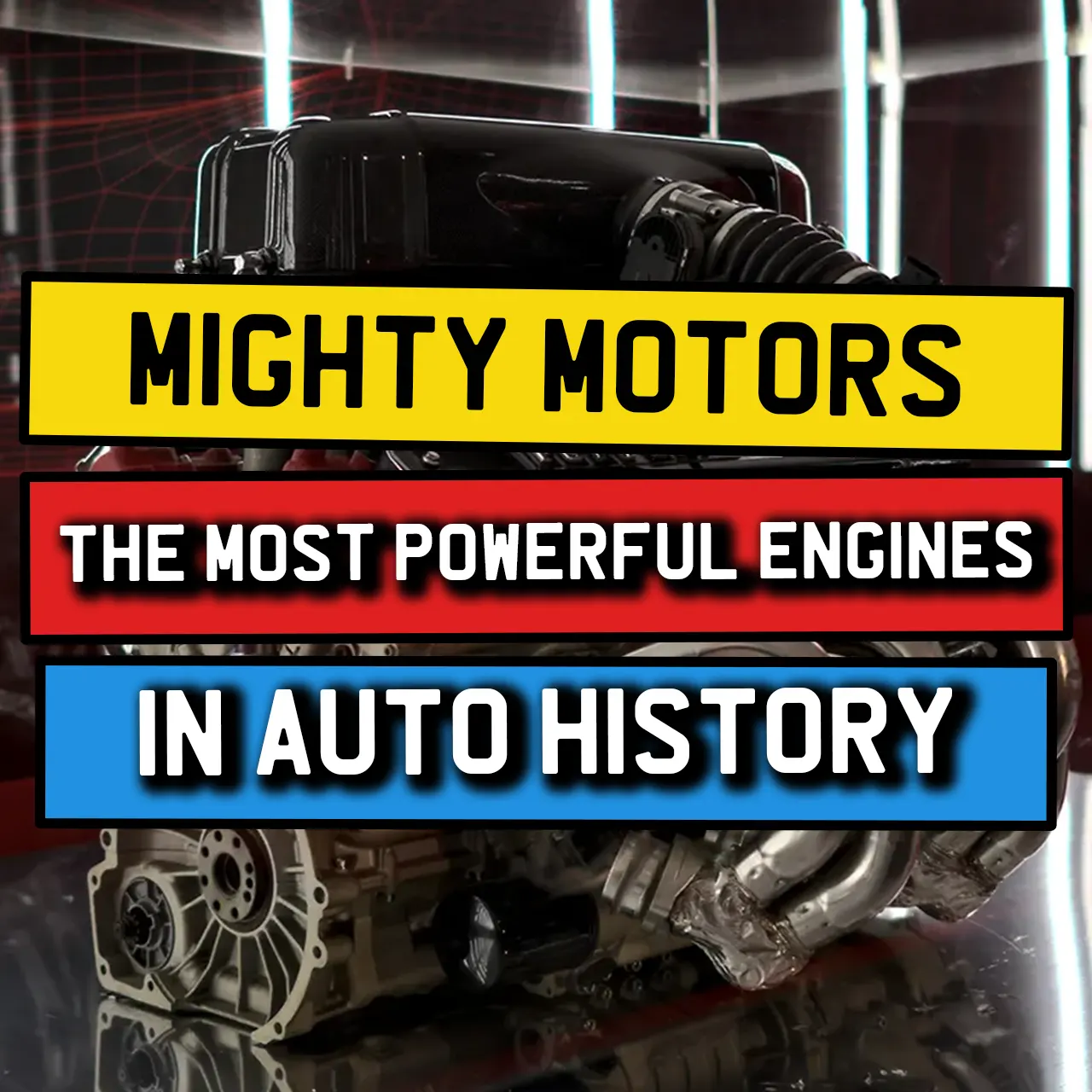The engine is at the heart of auto engineering. Right back from the earliest internal combustion engines to the electric powertrains of today, the evolution of engines has been a long and fascinating journey of speed, power, and innovation.
This article will delve into some of the most powerful, iconic engines that have made a mark on automotive history.
The Beast of Turin – Fiat S76’s 28.5-Litre Engine
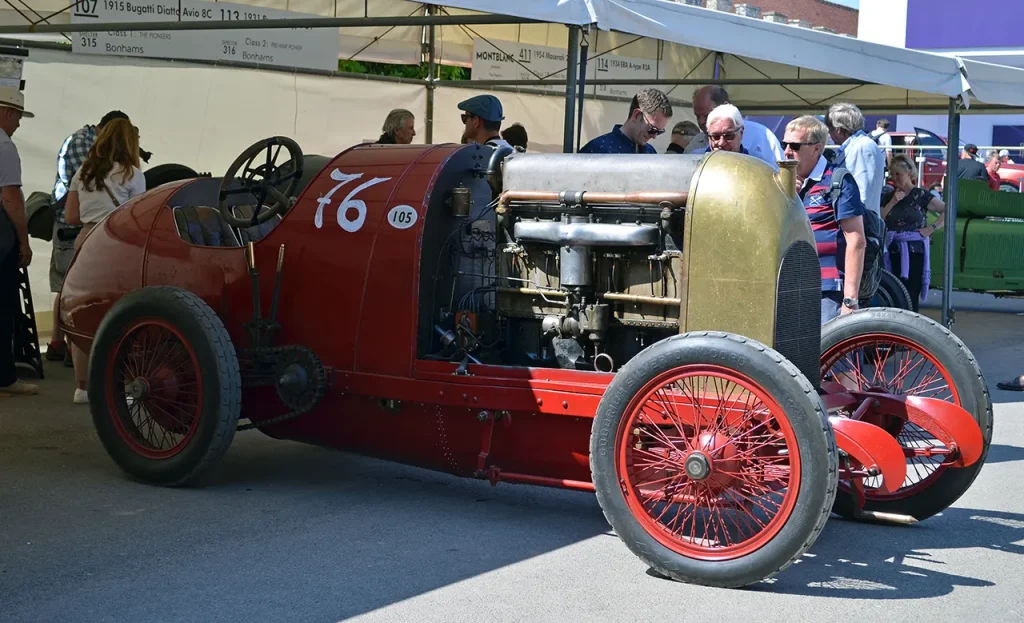
Production: 1910(only 2 built)
Fuel type: Petrol
Displacement: 28.5 litres (1,730.2 cu in)
Power: 210 kW (290 hp)
Power density: 10.1 hp / litre
Torque: 2,712 Nm (2000 lb ft)
Built in 1910, the monstrous machine known as “The Beast of Turin” was designed and built with one goal in mind: to snatch the land speed record from the clutches of the Blitzen Benz.
The S76 was powered by a 28.5 litre 4-cylinder engine, which makes it one of the largest capacity engines ever used in a car even today. This giant powerplant only produced 290 horsepower, which may seem quite a low figure, but it also produced 2,712 Nm of torque, which was the main goal of the engineers who created it.
It wasn’t just about brute force, though. The “Beast of Turin” showcased Fiat’s technical capabilities and ambitions. With its massive cast iron block and huge pistons, Fiat was demonstrating its ability to push boundaries. Despite the size and power output, the S76 was also a surprisingly agile car thanks to the lightweight construction and advanced chassis design (for its time, of course).
American Muscle – The 426 Hemi from Chrysler
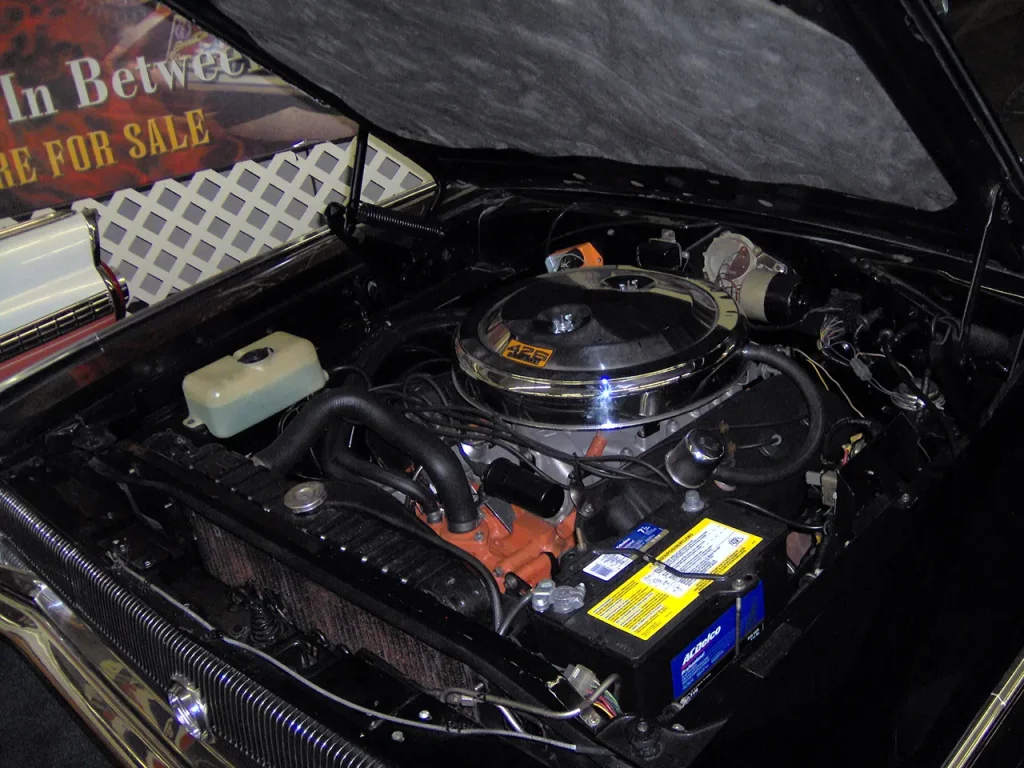
Production: 1964 – 1971
Fuel type: Petrol
Displacement: 7.0 litres (426.16 cu in)
Power: 317 kW (425 hp)
Power density: 60.8 hp / litre
Torque: 664 Nm (490 lb ft)
Back in 1964, Chrysler introduced the 426 Hemi engine, one of the most significant engines in automotive history. The Hemi 426 has a hemispherical combustion chamber – an efficient shape which has a high surface to volume ratio, low heat loss, and room for large valves. The engine quickly gained a reputation for high performance and was something of a game changer, being nicknamed the “elephant engine” because of its power, weight, and size.
It was developed for NASCAR racing and was used in the Plymouth Belvedere in 1964, but wasn’t allowed to compete in the 1965 season. Ford had made complaints about the power of the engine and at the time NASCAR had a homologation rule that required at least 500 engines to be available in production vehicles sold to the general public.
In 1966, Chrysler began introducing the “street” Hemi to its cars and eventually sold the 500 Hemi engines to the public so they could use it in NASCAR racing.
The Supercar Standard – Ferrari F140 Engine
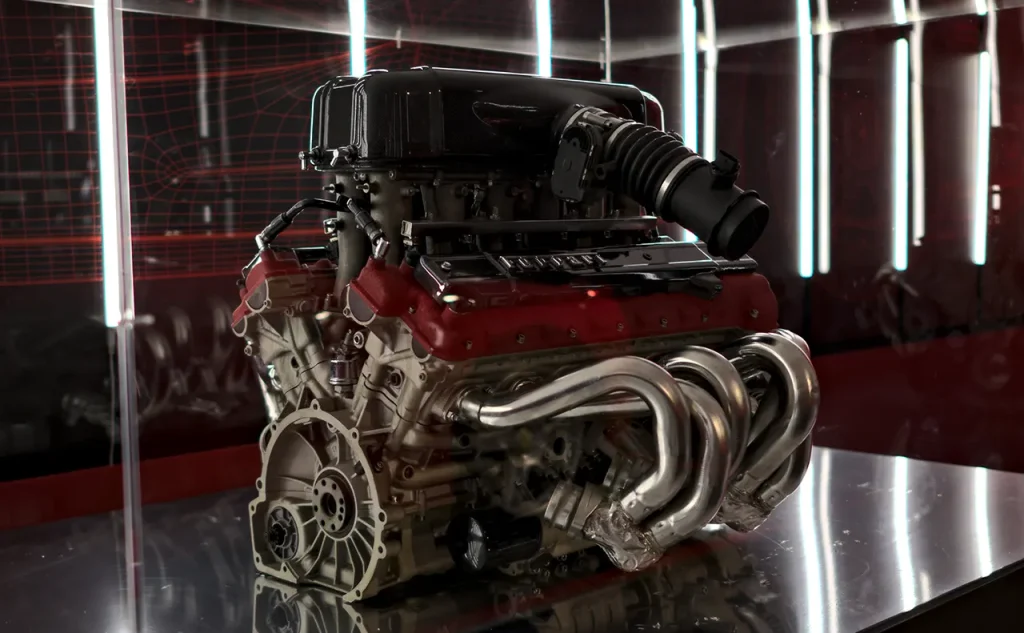
Production: 2002 – present
Fuel type: Petrol
Displacement: 6.0 litres – 6.5 litres (366.14 cu in – 396.65 cu in)
Power: 456 kW – 618 kW (612 hp – 829 hp)
Power density: 102 hp / litre – 127.53 hp / litre
Torque: 608 Nm – 697 Nm (448 lb ft – 514 lb ft)
Ferrari F140 is a family of engines produced by Ferrari since 2002, used in Maseratis and Ferraris. These engines are 65° V12 DOHC petrol engines derived from the Ferrari/Maserati V8. In 2002, the F140 engine set the record for most powerful naturally aspirated engine used in a road car when it was used in the Ferrari Enzo.
The one that was used in the Enzo was the Tipo F140B, which displaces 5998.8 CCs. A similar engine – the Tipo F140C – was used for the Ferrari 599 as the most powerful production Ferrari engine.
The engine has seen several iterations over the years and the displacement has increased for various models. For example, the Tipo F140EB displacement was increased to 6262.456 CCs and debuted in 2011 when it was used in the Ferrari FF.
In May 2013 the US Department of Energy said the Ferrari FF is the 2013 Least Fuel-Efficient Car in the midsize class.
An Engineering Marvel – Bugatti’s Quad-Turbocharged W16
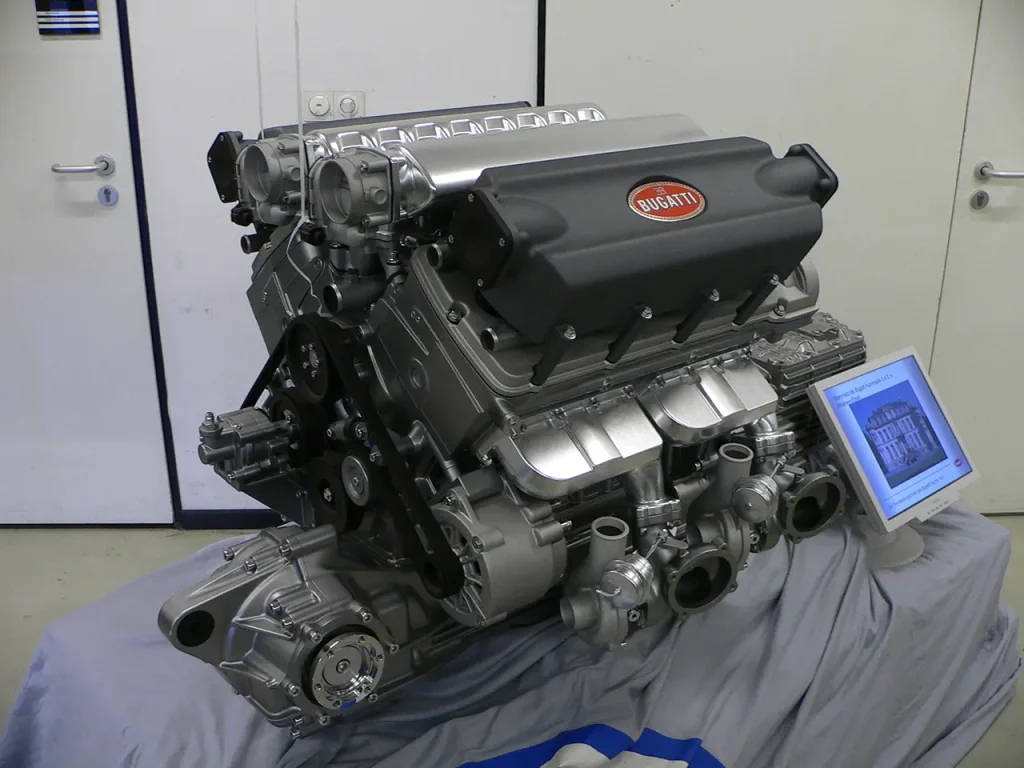
Production: 2005 – 2021, 2024 –
Fuel type: Petrol
Displacement: 8.0 litres (488.19 cu in)
Power: 736 kW – 1,361 kW (987 hp – 1,825 hp)
Power density: 123.37 hp / litre – 228.12 hp / litre
Torque: 1,250 Nm – 1,850 Nm (922 lb ft – 1,364.5 lb ft)
Possibly the most famous powerplant on this list – the Bugatti W16 engine is a true “mighty motor”! The engine is quad-turbocharged and most notably found in the Bugatti Veryon and Bugatti Chiron. The W16 engine is actually 2 narrow-angle V8 engines mated to a common crankshaft at 90 degrees.
With a total displacement of 8.0 litres and four turbochargers, the W16 produces an immense amount of power. Depending on the model, the engine can produce between 987 and 1,825 horsepower. The most powerful of which is installed in the Bugatti Bolide, a track-day focussed car.
Aside from the Veyron and Chiron, the engine is also used in all of the following Bugatti models:
- Bugatti 16C Galibier (concept car)
- Bugatti Divo
- Bugatti Centodieci
- Bugatti Bolide
- Bugatti Mistral
- Bugatti Vision Gran Turismo (concept vehicle)
Bugatti retired the engine in 2021, but the engine is making a return in the Bugatti Mistral in 2024, when deliveries are expected. The Mistral will be the fastest roadster in the world.
The Heart of a Legend – Lamborghini’s V12
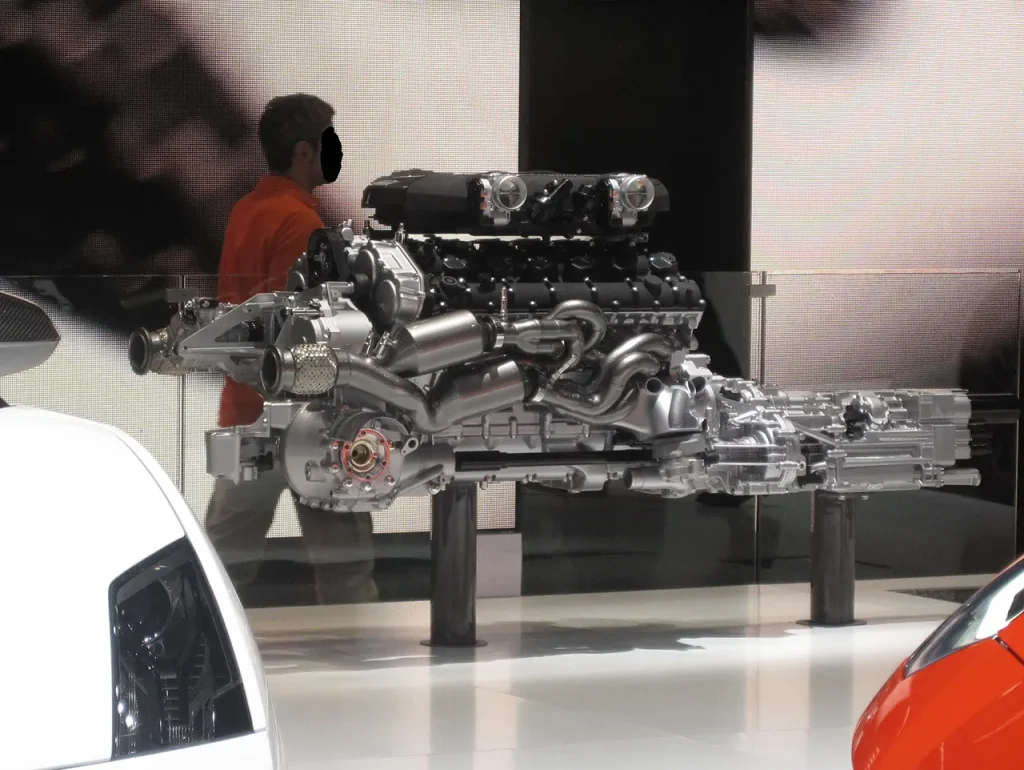
Production: 1963 – 2022
Fuel type: Petrol
Displacement: 3.5 litres – 6.5 litres (211.4 cu in – 396.5 cu in)
Power: 201.3 kW – 515 kW (270 hp – 690 hp)
Power density: 78 hp / litre – 106.2 hp / litre
Torque: 324 Nm – 690 Nm (239 lb ft – 509 lb ft)
Produced between 1963 and 2022, the Lamborghini V12 is a four-stroke, 60° naturally aspirated 12-cylinder petrol engine designed by Lamborghini. It was the first V12 engine developed by Lamborghini, and the first engine they ever produced.
From the start, the engine was designed to be a quad cam 60° V12. This was a snub at Ferrari’s single overhead camshaft design. The engine has been used in numerous Lamborghini models, including:
- Lamborghini 350GT
- Lamborghini Miura
- Lamborghini Espada
- Lamborghini Countach
- Lamborghini LM002
- Lamborghini Diablo
- Lamborghini Murciélago
- Lamborghini Aventador
- Lamborghini Veneno
- Lamborghini Centenario
- Lamborghini Essenza SCV12
- Lamborghini Sián FKP 37
The Power of Innovation with Koenigsegg’s Twin-Turbocharged V8
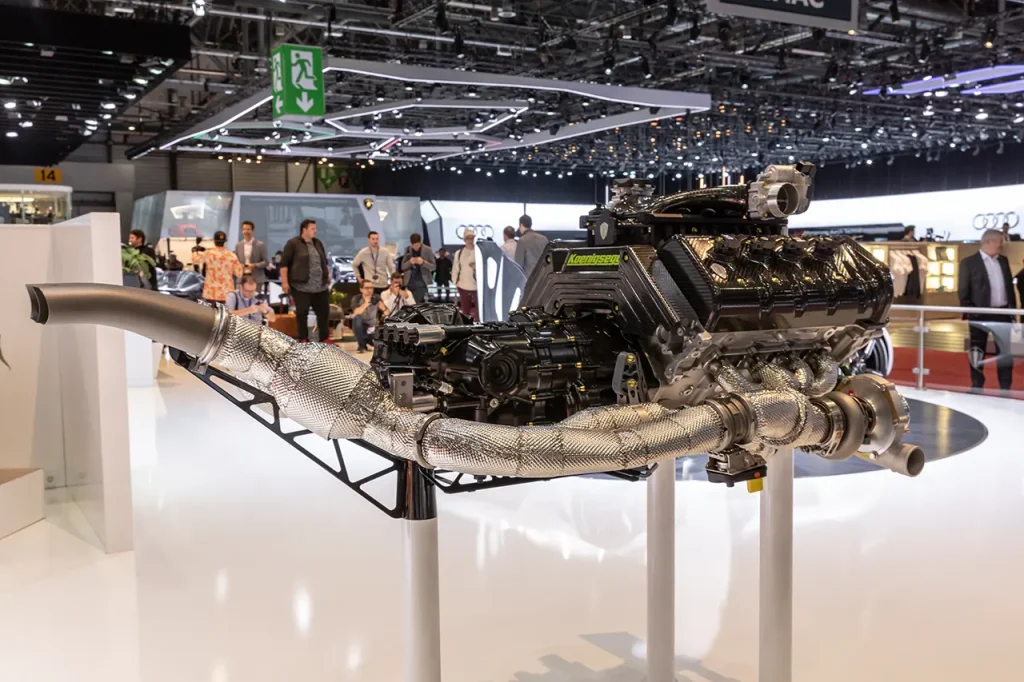
Production: 2021 – present
Fuel type: Petrol
Displacement: 5.1 litres (309.1 cu in)
Power: 955 kW (1,281 hp) with petrol. 1,195 kw (1,603 hp) with E85.
Power density: 251.17 hp / litre with petrol. 314.31 hp / litre with E85.
Torque: 1,000 Nm (738 lb ft) with petrol. 1,500 Nm (1,106 lb ft) with E85.
Koenigsegg’s Jesko – a limited production mid-engine sports car – was unveiled at the 2019 Geneva Motor Show. It was named after Jesko von Koenigsegg, the father of the company’s founder. The Jesko is also the successor to the Agera and comes in 2 variations. First is the Absolut, designed for speed. Second is the Attack, which is a track car.
The Jesko uses a 5.1 litre twin-turbocharged V8 that was developed from the Agera engine. It produces 955 kW (1,281 horsepower) and propels the vehicle to 480 km/h (300 mph). Koenigsegg even says they believe the Jesko Absolut can reach speeds of 330 – 350 mph under the right conditions.
Peak Performance – The Devel Sixteen’s 12.3 Litre V16 Engine
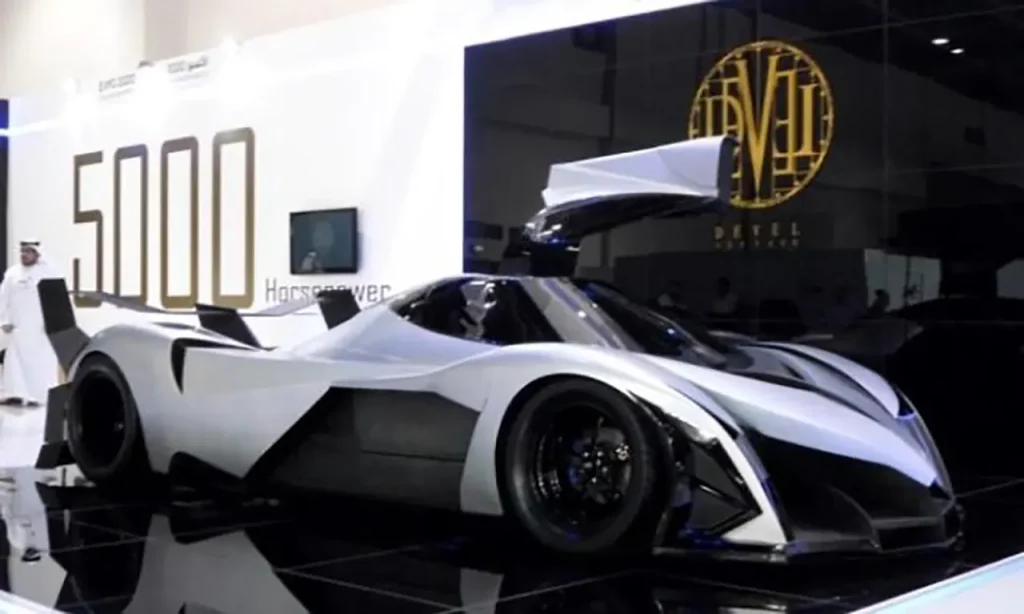
Production: 2022 –
Fuel type: Petrol
Displacement: 12.3 litres (750.59 cu in)
Power: 3,734 kW (5,007 hp)
Power density: 407.07 hp / litre
Torque: 5,094 Nm (3,757 lb ft)
A prototype in development – the Devel Sixteen is a sports car designed by Devel Motors in the United Arab Emirates, and its designers claim it to be the fastest car in the world. The Devel Sixteen has a claimed top speed of 586 km/h (364 mph) and a blistering 0-60 time of 1.6 seconds.
Devel Motors says three models will be available:
- A base model with a V8 that produces 1,500 – 2,000 horsepower.
- A V16 version with 3,006 horsepower.
- A track-only version with a mighty V16, quad-turbo that produces 5,007 horsepower.
As of June 2022, only one Sixteen with a V8 has been produced, but the performance figures are not yet confirmed.
While we don’t have the performance figures, with a price tag of $1.7m we can expect the performance of any Sixteen to be extraordinary. The Sixteen is poised to redefine the boundaries of automotive performance as we await more details and confirmed performance figures.
McLaren’s M838T Engine
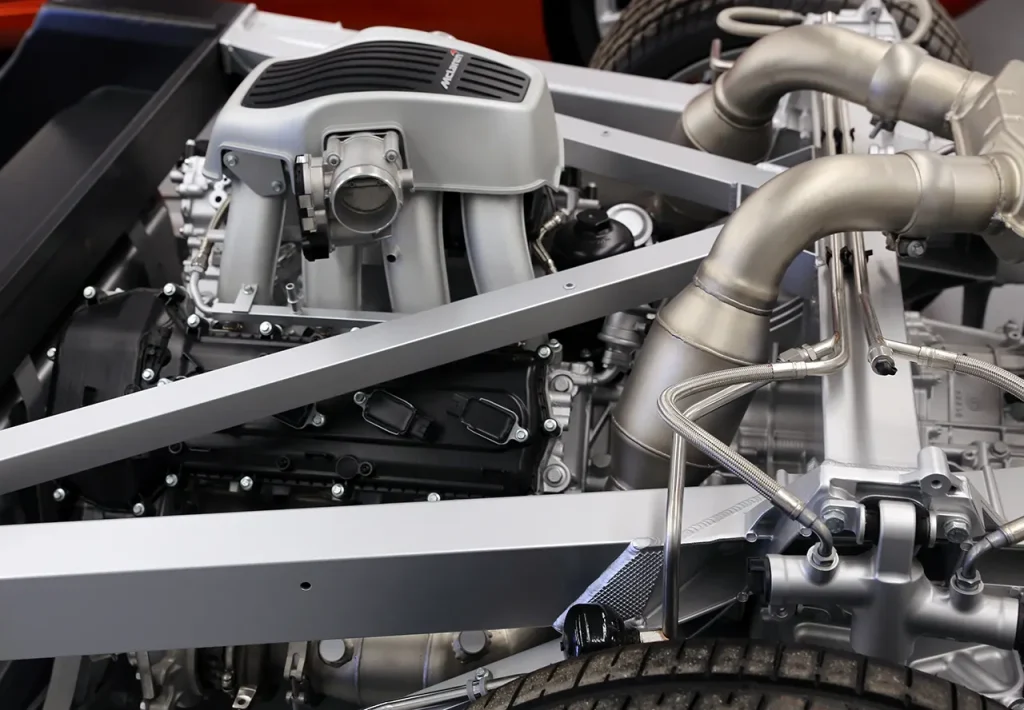
Production: 2011 – 2021
Fuel type: Petrol
Displacement: 3.8 litres (231.8 cu in)
Power: 368 kW – 588 kW (493 hp – 789 hp)
Power density: 129.73 hp / litre – 207.63 hp /litre
Torque: 540 Nm (398 lb ft) – 720 Nm (531 lb ft)
McLaren and Ricardo developed the M838T engine for the 2011 McLaren MP4-12C, and then later re-developed it for the McLaren P1. The engine is a 3.8 litre twin-turbocharged V8 that produces 493 to 789 horsepower, depending on the model. Ricardo, a British engineering consultancy known for its work in the automotive sector, collaborated with McLaren to design and build the engine.
Over the years, the M838T has been used in various models, including:
- MP4-12C
- 650S
- 675LT
- P1
- 540C
- 570S
- 600LT
- 620R
In the P1, the engine was modified to improve cooling and durability at high loads. The engine was also altered to incorporate an electric motor which forms part of a hybrid drive train. This variant produces 727 hp with an additional 176 hp from the electric motor, totalling 903 hp.
One of the most significant features of this engine is its ability to produce 80% of the engine’s torque at RPMs as low as 2000. According to McLaren, no other production engine has a higher horsepower to CO2 emission ratio.
Bonus: The Green Giant (Tesla’s Tri-Motor Powertrain)
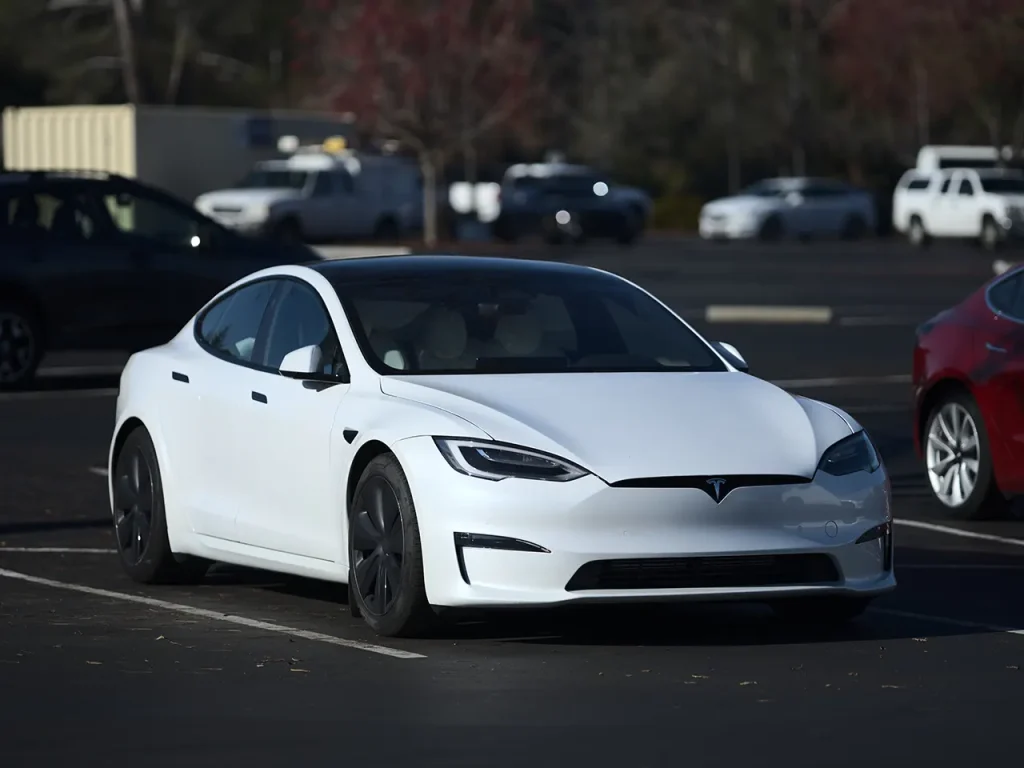
Production: 2021 –
Power: 760 kW (1,020 hp)
Torque: 1,420 Nm (1,050 lb ft)
Tesla’s tri-motor powertrain currently features in the Model S Plaid (and the upcoming Cybertruck). The powertrain has 2 motors that provide power to the rear wheels independently, with a single motor powering the front wheels.
One of the more impressive aspects of the tri-motor powertrain is the power and performance is offers. The Model S Plaid accelerates from 0-60 in less than 2 seconds, making it one of the fastest production cars in the world. Tesla says the S Plaid will reach 320 km/h (200 mph).
Additionally, the tri-motor powertrain offers some other benefits on top of sheer power. Traction and off-road capability are enhanced, which is particularly relevant to the Cybertruck. Power can be distributed to each rear wheel and both front wheels as needed.
Summary
Whether it’s a thunderous Chrysler V8 Hemi or a silent Tesla motor, the engine (or electric powertrain) lies at the heart of every car. As we look to the future evolution of engines and powertrains, newer technologies promise better efficiency, more speed, and more power.
Each of these engines represents a milestone in the history of automotive engineering. There are many more famous engines that we haven’t covered, but if you’re interested in reading more, here are some more famous ones you can read about:
- Chevrolet Small-Block V8 – known for its compact design and high power output.
- Ford Flathead V8 – the first affordable V8 that was mass produced. Known for reliability and simplicity.
- Porsche Flat-6 – known as the “boxer” configuration and used in the iconic Porsche 911.
- Subaru EJ20 – the flat-4 boxer configuration that powered Subaru’s most famous cars.
- BMW S54B32 – an inline-6 that powered the E46 M3.
- Honda B-Series – the B-Series engines famously power the Integra Type R and Civic Si.
- Toyota 2JZ-GTE – powered the Supra and known for durability and high power potential.
- Mercedes-AMG M156 – powered a range of AMG models and known for high power and thrilling sound.
- Volkswagen W12 – the “W” configuration engine used in Bentley’s and Bugatti’s.
- Mazda Rotary (13B-REW) – a rotary engine used in 13B-REW and RX-7, known for high revving and tuning potential.
